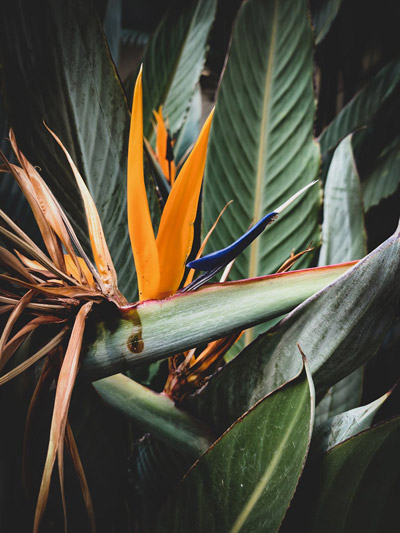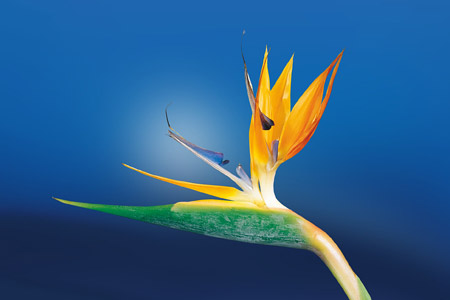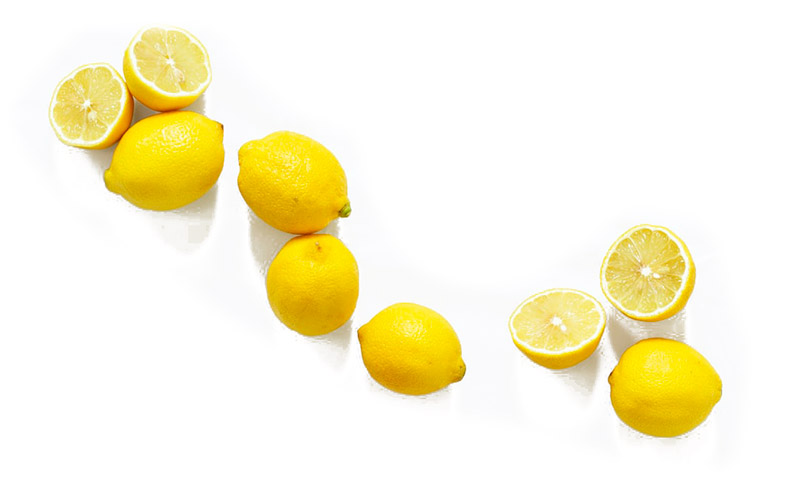 It’s a small inconvenience, but I still have the unsavoury task of having to buy lemons at the grocery store.
It’s a small inconvenience, but I still have the unsavoury task of having to buy lemons at the grocery store.
Let me explain…
A few years back, I became more enthralled with unique plant species you wouldn’t usually find in our region, floral and leafy displays that would spark interest and curiosity from guests. They’d prompt questions such as, “Where did you get this plant?”, “What are these?” “How did you grow this here?”
The simple answer is usually “Indoors” – as is the case for almost all of the tropicals we have in our garden. A few of them I’ve managed to keep alive and in the ground over the winter, but generally, we acquire the plants, transfer them to grow indoors during the cold months and then transplant them back throughout our gardens in the springtime.
Why? I love seeing tropicals in a temperate climate – especially around the pool during summertime.
My Subtropical Friends

The bananas produce around four shoots, or ‘pup’s that extend from the main plant each season, which you can then separate and transplant individually. Cannas multiply vigorously beneath the soil as the rhizome extends into new bulbs. These can then be separated in the fall and re-transplanted in the springtime.
I’ve always loved tropical fruit trees as well. Unfortunately, many are too large to manage indoors or won’t grow year-round in a northern climate. Imagine having a grapefruit tree in your backyard! So a few years back in early spring, I was randomly searching Kijiji as I sometimes do, to see what sort of exciting or unique plants people were selling. What I came across were some full-grown lemon trees. I was intrigued… But at the same time, the price for even a tiny plant was fairly steep at around $100 to $150 each.
I did a little more Internet sleuthing and discovered that you could actually grow lemon trees quite easily from seeds at home – how cool is that? The plants and trees were also a very manageable size, and it didn’t appear overly challenging to care for. However, waiting for them to bear fruit turned out to be my mental stumbling block in starting this project. The task required patience – a lot of patience, as in, three years’ worth. Three long years… That was about three years longer than I cared to wait at the time.
While I did have a spare room where I could set up my plants to ‘go south’ for the winter, three years for a plant that may or may not bear much fruit in the end, or even grow for that matter, seemed like a lot of time and energy to expend, so I casually abandoned the idea.
Three Years Later
Pulling a large planter out of the garage one morning a week or so ago, which we usually use for leftover tropicals to accent our front walkway, it dawned on me – it had been three years since I thought about planting those lemon seeds! Those sort of moments sting a little, prepping the garden for spring and thinking that if I had followed through with this idea, I’d likely have a beautiful little ornamental tree to put in my front yard. Perhaps even some fresh lemons at some point!
I was instantly regretting my decision (or my laziness) of not getting started on that project, thus not being able to bring out my lemon tree to plant in the front garden for the season. Plants like that are so neat to have, and they make great topics for conversation as neighbours I’ve never met stop on their walks and ask what certain plants are and how you managed to grow them here.
In reality, I think it was many factors that ultimately dissuaded me from going through with my citrus tree attempts. It was a lack of time, lack of motivation, worries about having to monitor even more plants all winter, not to mention the potential insects and pests that would find their way inside the house and onto my plants.
Were these valid concerns, sure – would they be that bad that I shouldn’t have gone ahead? I’ll never know – because I never got started.
Investing Parallels

Investing can be challenging, as similar to lemon trees; the real fruit your investments bear doesn’t generally appear for at least five or ten years down the road. Small and seemingly insignificant habits turn into big rewards, but just like looking at a plant, you won’t see the growth by sitting and staring at it – it happens over time. We also live in the present, so it’s difficult to place ourselves in future scenarios and envision the potential of our investmen6ts down the road. Not to mention, delayed gratification isn’t fun or exciting.
As you can see in my case, though, the future arrives sooner than we imagine. Often we talk about successful people having breakthrough moments or becoming overnight successes. The truth is that like investing and planting trees, success is, more often than not, an accumulation of small wins. It’s all of the good habits we’ve developed and an accumulation of those small victories stacked upon one another. Those victories build over time towards our overall success and reaching our goals. It rings true with responsible investing. Most of us don’t become rich overnight, it’s a journey, and the sooner you begin, the easier things evolve and grow in the future.
Lessons Learned
So back to my tropical plants – they’re like small investments to me. My canna lilies and bananas produce new plants every year – these are my dividends for the time invested each year removing them from the ground and caring for them over the winter months.
The majority of my perennials, although not tropical, are the core of my gardening portfolio. I love these because even though some are boring at times, they’re constant fixtures every year, and I don’t have to worry or think much about them. Like ETFs, most of these guys multiple slowly and can be separated a couple of times a year (my quarterly dividends). They provide a stable foundation for the aesthetics of my yard.
My palms, although they don’t produce much in the way of dividends, are like gold to me. They’re shiny, they glisten, and are marvellous to look at by the pool. These steady and stable assets are ones I can rely on to come back strong each year even though they only make up a small portion of my plant portfolio.
Finally, my lemon tree (the one I wish I had now.) While it would have been a bit of additional work, I didn’t consider all the possible benefits. I could have planted several at the beginning, not just one. I’d have loads of free citrus fruits to enjoy with my meals and drinks. I’d likely be able to recoup some of my time and get more value by selling an extra plant or two, which I’ve done with my banana trees.
Luckily this experience hasn’t soured me but instead refreshed my thoughtfulness in regards to these key investing lessons:
- Start today if you haven’t already.
- Be consistent and stick with your plan.
- Pay attention to the environment you’re in and adapt accordingly.
- Have patience, and your investments will bear fruit.





Great post, I feel the same way about gardening.
Yield is not much in beginning but as you get better and better your dividends get bigger!
Thanks! That’s good to know about gardening, i’ve wanted to do a vegetable garden but never get around to it. Then I read mems/jokes about people spending $300 and 100 hours to yeild a few cucumbers. Makes sense that the yeilds will imrove as your garden matures and your experience grows.